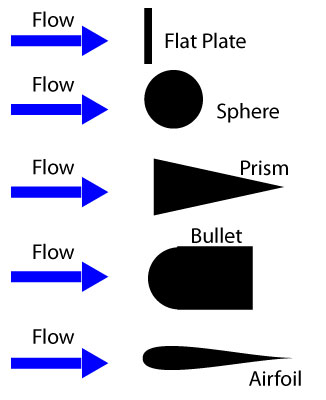Session 1: Demonstrating that drag is influenced by the shape of the object
Objective: students have to experience drag using different shapes and to deduce which one is producing the smallest amount of drag.

Explanation:
Geometry has a large effect on the amount of drag generated by an object. As with lift, the drag depends linearly on the size of the object moving through the air. The cross-sectional shape of an object determines the form drag created by the pressure variation around the object. The three dimensional plan form shape affects the induced drag of a lifting wing.
To produce less drag the shape of the object has to be aerodynamic, stream lined. Think about a plane and its form or think about a boat. Their forms are aerodynamic, they are not cubs or spheres or plates.
Material:
few tanks
different forms: flat plates, few bearing balls, an aerodynamic form, water,
a cube, scotch tape
Maximum duration:
60 minutes
Main questions to be asked:
- What is drag?
- What influences drag?
- Why do you think form influences drag?
Introduction/Starters
Ask the students what drag is. Let more of them answer and ask them to explain. Which factors do you think influence drag? Explain. Show them the board with the forms and ask them which of the forms they think produce less drag.
Main activities
First experiment:
- Divide the students in groups of four, each group will have: one tank filled with water and few forms: flat
plate, sphere and an aerodynamic form(we will use a boat and a wing) - Ask them to fill the tank with water, and then try to move the forms in the water using the hand. They have
to move them horizontal and monotonous. First use the flat plate, then the sphere and then the boat and the wing. - Ask them to write down which of this forms they could move easier.
Second experiment:
For the second experiment we need two tanks filled with water, two identical bearing balls (having the same size, same weight and the same roughness) and another two having different size.
- In the same groups of 4, ask them that each one to drop the balls in the tanks at the same time.
- Ask them to repeat this using two different sized balls
- Ask them to write down their observations
Conclusion / Plenary
The smallest amount of drag is produced by an aerodynamic profile.










